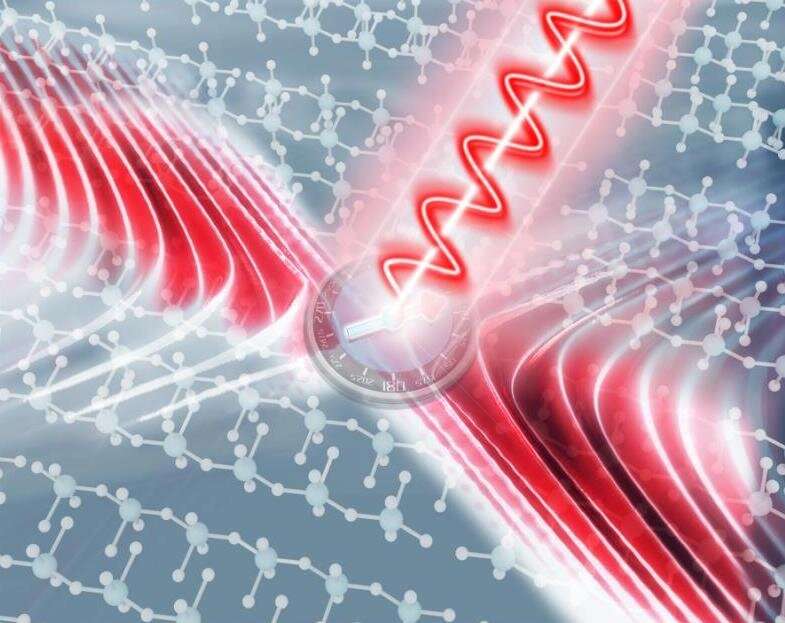This article has been reviewed according to Science X's editorial process and policies. Editors have highlighted the following attributes while ensuring the content's credibility:
fact-checked
trusted source
proofread
Breaking symmetry to excite polaritons

Exploiting ultra-confined and highly directional polaritons at the nanoscale is essential for developing integrated nanophotonic devices, circuits and chips. High-symmetry crystals have been extensively studied, with a particular focus on hyperbolic polaritons (HPs). However, the in-plane HP propagation in high-symmetry optical crystals usually exhibits four mirror-symmetric beams, which reduces the directionality and energy-transporting efficiency.
In a new paper published in eLight, a team of scientists led by Professor Xinliang Zhang and Peining Li from Huazhong University of Science and Technology and Professor Zhigao Dai from China University of Geosciences have developed a new technique for in-plane anisotropic excitation and propagation of HPs by controlling the near-field excitation source. Their research could expand the possibilities for manipulating asymmetric polaritons, where it could be applied to reconfigurable polaritonic devices.
Recently, hyperbolic shear polaritons, also known as mirror-symmetry-broken polaritons, have been discovered in low-symmetry monoclinic crystals, which exhibit enhanced directional propagation despite suffering from large losses. The nontrivial asymmetries of these shear polaritons arise from the intrinsic non-Hermitian permittivity tensor of the low-symmetry crystals, which thus are not available in high-symmetry crystals.
The research team investigated the impact of linearly polarized in-plane sources on generating symmetry-broken HPs with enhanced directional propagation in high-symmetry, low-loss systems. The team theoretically and experimentally demonstrated that controlling the near-field excitation source can configure the excitation and propagation of in-plane HPs. It leads to the breaking of mirror symmetry in HPs without the need of low crystalline symmetry.
The team's source-configured approach enables the tuning of the asymmetric polariton propagation over a broad frequency range, thereby establishing a new degree of freedom for the dynamic and robust control of light guiding and propagation on the nanoscale. Their results expand the possibilities for manipulating polaritons and can be applied to reconfigurable polaritonic devices for polarization-dependent nanophotonic circuits or optical isolation.
More information: Caixing Hu et al, Source-configured symmetry-broken hyperbolic polaritons, eLight (2023). DOI: 10.1186/s43593-023-00047-1
Provided by Chinese Academy of Sciences




















